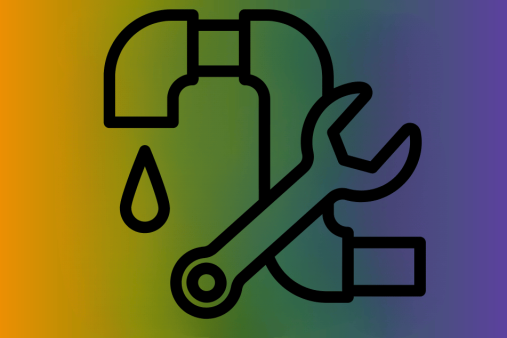Find Local Home Insulation Near You
North East Builders
Services & skills:
- Architects & Surveyors
- New Home Builders
- Conservatories
- House Extension Builders
- Garage Builders
R&R Joinery And Building Contractor Ltd
Services & skills:
- Conservatories
- Underpinning / Piling / Foundations / Concreting
- Log Cabins / Timber Framed Buildings
- Skip Hire / Equipment Hire & Scaffolding
- Loft Conversion Specialists
Russell Bespoke Construction Limited
Services & skills:
- House Extension Builders
- Walls / Ceilings / Knock-Throughs / Partition Walls
- Subsidence
- Spray Foam Loft Insulation
- Agricultural Builders
24 hour callout, Clean and tidy, Commercial work covered, Domestic and commercial projects
Steadfast Trades
Services & skills:
- Carports
- Spray Foam Loft Insulation
- Agricultural Builders
Accepts Urgent Jobs, All work guaranteed, Cards Accepted, Free quotes / estimates
R Bailey Roofing Contractors Ltd
Services & skills:
- Sectional Building Specialists
- Spray Foam Loft Insulation
Russell Bespoke Construction Limited
Services & skills:
- Home Insulation
- Renovations & Refurbishment
- Underpinning / Piling / Foundations / Concreting
- Agricultural Builders
- Architectural Technician
Beat or match price, Efficient timescales, Fully insured, Guaranteed customer satisfaction
A M 1 Carpentry & Construction
Services & skills:
- Conservatories
- Walls / Ceilings / Knock-Throughs / Partition Walls
- Steel / Brick / Concrete Structural Repairs
- Basement / Cellar Conversions
- Building Services
Paving Mad Thanet Home Improvements
Services & skills:
- Renovations & Refurbishment
- Conservatories
- Steel / Brick / Concrete Structural Repairs
- Building Services
- Loft Insulation
Ara's Firm
Services & skills:
- Architects & Surveyors
- Renovations & Refurbishment
- Steel / Brick / Concrete Structural Repairs
- Basement / Cellar Conversions
- Loft Insulation
Crown Builders And Landscaping
Services & skills:
- New Home Builders
- Garden Office Builders
- External Wall Insulation
- Agricultural Builders
- Architectural Technician
Do you work in this trade? Are you a reliable and trustworthy trader looking to generate more work for your business?
Join us todayInternal Wall Insulation Guide For Homeowners
Introduction to Internal Wall Insulation
What is Internal Wall Insulation?
Internal Wall Insulation (IWI) is a practical solution for improving the energy efficiency of homes with solid walls or those lacking cavity insulation. Unlike cavity wall insulation that fills the gap between two wall layers, IWI involves adding insulating material to the inner face of external walls. This method is particularly effective for older properties—think charming Victorian terraces or rustic stone cottages—that often lose heat through their thick but uninsulated walls.
At its core, IWI typically involves attaching insulation boards, mineral wool batts, or insulated plasterboards to internal walls. These are then covered with a vapour barrier and plasterboard finish. The goal? To drastically reduce heat loss, lower energy bills, and create a cozier indoor environment without compromising the external appearance of your home.
This approach is often chosen when external insulation isn’t an option due to planning restrictions, budget constraints, or aesthetic concerns. It's especially valuable for conservation areas where maintaining the facade is essential. However, it’s important to remember that IWI reduces room space slightly—typically around 50-100mm per insulated wall—but the energy savings often outweigh this minor drawback.
Why Consider Internal Wall Insulation?
So, why go for internal wall insulation in the first place? Let’s break it down.
-
Energy Efficiency: Homes without wall insulation can lose up to 35% of heat through walls alone. That’s like trying to keep your tea warm in a sieve! IWI acts as a thermal jacket for your home, keeping the heat where it belongs—inside.
-
Cost-Effective Retrofit: If you’re renovating or redecorating anyway, it’s the perfect time to add insulation. You're already peeling back the walls, so why not improve them?
-
Carbon Footprint Reduction: With energy efficiency comes environmental benefits. Less heat loss equals less energy use, which means lower CO₂ emissions. That’s a win for your wallet and the planet.
-
No External Changes: If your home’s exterior can’t be altered—say, it’s listed or in a conservation zone—IWI offers a discreet way to insulate.
-
Quick Installation: Compared to full-scale external insulation, the internal route is generally quicker and less weather-dependent, making it a viable year-round project.
Of course, it’s not all sunshine and rainbows. Internal insulation comes with challenges—reduced room space, potential condensation issues, and the need to work around internal fittings. But for many, the pros far outweigh the cons.
Types of Internal Wall Insulation
Stud Wall Insulation
Installation Method
Stud wall insulation involves building a timber or metal frame (the “stud wall”) slightly in from the existing internal wall. The space within the frame is filled with insulation—usually mineral wool or rigid foam boards—then finished with plasterboard. This setup creates an effective barrier that traps heat inside the room.
This method is more flexible and allows for the inclusion of services (like wiring and piping) within the cavity. However, it does reduce room dimensions more than other types, typically by 100mm or more per wall. That can add up quickly in smaller rooms, so it’s something to plan carefully.
Pros and Cons
Pros:
-
Excellent thermal performance
-
Allows for hiding services (pipes, wires)
-
Can include soundproofing layers
-
Suitable for uneven wall surfaces
Cons:
-
Reduces room space significantly
-
More labor-intensive to install
-
Can be more expensive due to framing costs
This method is best suited for full refurbishments or when space loss isn’t a critical issue. It's also ideal in cases where rewiring or replumbing is already part of the plan.
Rigid Insulation Boards
Best Use Cases
Rigid insulation boards are pre-manufactured panels made from materials like PIR (polyisocyanurate) or phenolic foam. These are fixed directly to the internal walls using adhesive or mechanical fixings and then covered with plasterboard or finishing plaster.
They're perfect for flat, smooth walls and are often used in urban flats or newer builds where walls require minimal correction. These boards are slim yet highly effective, often delivering high R-values per inch compared to mineral wool.
Material Types and Costs
You’ll typically find the following types:
-
PIR boards (e.g., Celotex, Kingspan) – Excellent insulation value, relatively affordable.
-
Phenolic foam – Slightly higher cost but better fire resistance.
-
EPS/XPS boards – Budget-friendly but slightly bulkier.
Cost Estimate (per m²):
-
Basic EPS: £10-15
-
PIR/Phenolic: £20-30
Installation is faster and cleaner compared to stud walls, making them great for DIY enthusiasts. However, proper wall preparation is essential, or you risk issues with adhesion and performance.
Insulated Plasterboard
Ease of Use
Insulated plasterboard, or thermal laminate board, combines a layer of insulation with a standard plasterboard face. It’s a 2-in-1 solution that’s glued or mechanically fixed to internal walls. It’s widely regarded as the most space-efficient IWI method and a favorite for homeowners wanting a fast retrofit without major construction.
Performance Overview
While it doesn’t offer quite the same thermal performance as thicker options, it provides a solid improvement and is ideal for rooms where every millimeter counts. It’s especially effective when paired with modern building membranes to reduce moisture risk.
Pros:
-
Minimal space loss
-
Quick and easy to install
-
Cost-effective for small projects
Cons:
-
Less flexible for wiring or pipework
-
Needs precise fitting to prevent cold bridges
Benefits of Internal Wall Insulation
Energy Efficiency and Cost Savings
Let’s talk numbers. A home with solid uninsulated walls can hemorrhage energy. By installing internal wall insulation, you can reduce heating costs by up to 40%. That’s hundreds of pounds saved each year, depending on property size and energy prices.
The upfront cost of installing IWI ranges between £40 to £90 per square metre, but the savings over 10 to 15 years often pay for the initial investment. Plus, it future-proofs your home against rising energy costs.
What’s more, the thermal comfort is noticeable. Your rooms warm up quicker, stay warmer longer, and avoid cold spots. That’s especially valuable during harsh winters.
Beyond savings, there’s also the increased property value. Homes with a higher EPC (Energy Performance Certificate) rating tend to attract more buyers and better resale prices.
Continuing with Step 2: Covering headings 6–10 with detailed content.
Drawbacks and Considerations
Loss of Floor Space
One of the most cited downsides of internal wall insulation is the inevitable loss of space. Depending on the method used—be it rigid boards, stud walls, or insulated plasterboard—you could lose between 50mm to 150mm per wall. In a small bedroom or kitchen, that can feel like a big deal.
Imagine your room shrinking just enough that a cupboard no longer fits or a bed feels too close to the wall. For homeowners working with limited square footage, that reduction is significant, especially if you're insulating multiple walls in multiple rooms.
There are ways to minimize this impact. Using thinner, high-performance materials like PIR or phenolic boards can keep space loss to a minimum. You might also choose to insulate only key walls (like north-facing ones) to strike a balance between energy efficiency and room size.
Still, it’s essential to think ahead. Plan room layouts post-insulation. Will you need to move sockets, skirting boards, or radiators? All of that adds to the complexity—and cost—of the project. But with smart design choices, the impact can be well-managed.
Potential for Moisture and Dampness
Here’s a critical consideration: internal insulation can potentially trap moisture inside your walls, especially in older properties. When warm, moist indoor air hits a cold wall behind the insulation, condensation can form. Left unchecked, that leads to damp patches, mold, and even structural damage.
This is why vapour control layers (VCLs) are so important. These membranes prevent moisture from entering the wall structure, protecting both the insulation and your home. In some systems, foil-backed insulation acts as the vapour barrier, while in others, a separate membrane must be installed.
Proper ventilation is also key. Think trickle vents, extractor fans, or even mechanical ventilation with heat recovery (MVHR) in airtight homes. And remember: always fix any signs of penetrating damp before you even think about insulating. If water’s already coming in, insulation will only hide the symptoms—temporarily.
Installation Disruption
Let’s be honest—installing internal wall insulation is not exactly a walk in the park. It’s messy, time-consuming, and invasive. You’ll need to remove skirting boards, radiators, sockets, switches, sometimes even fitted wardrobes. For large-scale jobs, it may feel like you’re living in a construction site.
If you're staying in the property during works, be prepared for dust, noise, and daily disruptions. For this reason, many homeowners choose to insulate rooms in phases, or coordinate insulation with broader renovation projects.
There’s also the need for precision. A poor fit or missed seal can cause cold bridging—where heat escapes through gaps or weak spots. That’s why many experts recommend hiring professionals, even if the materials seem DIY-friendly. When it comes to insulation, cutting corners literally and figuratively can cost you big time.
Cost of Internal Wall Insulation
Price Breakdown by Method
Internal wall insulation costs can vary significantly based on the insulation method, the materials used, and whether you hire a professional or do it yourself.
Here’s a basic price breakdown (per square metre):
-
Insulated plasterboard: £40 – £60
-
Rigid boards with separate plasterboard finish: £50 – £75
-
Stud wall with mineral wool: £60 – £90
-
Labour (if hiring professionals): £100 – £200 per day
Example total for an average room (20m² wall area):
-
DIY with plasterboard: ~£1,200
-
Professional install with rigid boards: ~£2,000+
Don’t forget to factor in the cost of removing and reattaching fixtures, redecorating, and any necessary replastering or electrical work. These hidden costs can add up fast.
Long-Term Savings Analysis
The great news? Internal wall insulation is an investment that pays off. On average, UK homeowners can save between £250 and £450 annually on heating bills, depending on the property size and energy rates.
Over a 10–15 year period, the insulation could essentially “pay for itself”—and then some. Add in the environmental benefits, improved EPC rating, and increased property value, and the case for insulation becomes even stronger.
Insulating larger properties or those with higher energy use will see the biggest returns. And if you pair IWI with other efficiency upgrades—like double glazing or solar panels—the benefits multiply.
Grants and Government Incentives
In the UK, several grant schemes and incentives can help offset the cost of internal wall insulation:
-
Great British Insulation Scheme (GBIS): Designed to help low-income households or homes with poor energy ratings.
-
ECO4 Scheme: Targets fuel-poor households and offers full or partial funding.
-
Local Authority Delivery (LAD): Focused on energy efficiency for homes in specific regions.
These grants can reduce or eliminate upfront costs entirely, especially for those on benefits or low incomes. It’s worth checking with your local authority or using Ofgem’s website to see what you’re eligible for. Even energy companies sometimes offer discounts or funding through obligation programs.
Step-by-Step Installation Process
Pre-Installation Checklist
Before you grab your tools or hire a pro, there’s a bit of homework to do. Here’s what you need to check:
-
Wall type: Solid brick, stone, or block?
-
Damp condition: Any signs of mold or leaks?
-
Room use: Will the room be heated regularly?
-
Fixtures: Are there radiators, plug sockets, or pipes in the way?
-
Ventilation: Is the room well-ventilated or airtight?
You should also consider whether the project will need building regulation approval. For most retrofits, especially those altering thermal performance, some form of compliance is required.
Tools and Materials Needed
Here’s a list of essentials for a standard plasterboard insulation project:
-
Tape measure and straight edge
-
Handsaw or insulation cutter
-
Screws and wall plugs
-
Insulated plasterboard or rigid boards
-
Vapour control membrane (if not integrated)
-
Foil tape (for sealing joins)
-
Adhesive or mechanical fixings
-
Plaster and finishing tools
Pro tip: Always wear gloves and a dust mask when handling insulation, especially mineral wool. It’s itchy and can irritate skin and lungs.
Installation Steps Explained
Here’s a simplified overview of the installation process:
-
Wall Prep: Remove old plaster, wallpaper, and fittings. Repair any cracks or damp spots.
-
Apply Adhesive or Build Frame: Depending on your system, either apply adhesive dabs for board fix or construct a stud frame.
-
Install Insulation: Fix boards directly to the wall or insert insulation between the studs. Make sure boards are tight and flush.
-
Seal Gaps: Use foil tape to seal all joints. This stops air leaks and reduces thermal bridging.
-
Add Vapour Barrier: If not integrated, install a membrane over the insulation.
-
Fix Plasterboard: Screw or glue the finishing board onto the insulation or studwork.
-
Finish and Paint: Skim the wall with plaster, then decorate as desired.
DIY vs Professional Installation
When to DIY
If you're handy with tools and have experience with basic construction work, installing internal insulation yourself is totally doable. DIY is especially viable for small spaces, utility rooms, or one-room projects where you're not dealing with complex layouts.
Opting for insulated plasterboard is the most beginner-friendly method. It requires less framing and fewer layers, reducing the chance of error. There are plenty of online tutorials, guides, and YouTube walkthroughs to help you along the way.
However, even experienced DIYers should be cautious about moisture management. Get it wrong, and you could create a breeding ground for mold behind your lovely new walls.
Benefits of Hiring Professionals
Hiring a qualified insulation contractor comes with some clear benefits:
-
Expertise in selecting the right materials for your home
-
Precision in fitting insulation around obstacles
-
Guarantees and Warranties on workmanship
-
Regulation Compliance with Part L and ventilation standards
They’ll also handle issues like socket relocation, re-plastering, and damp proofing. Yes, you’ll pay more—but for complex jobs or high-value properties, it’s worth the peace of mind.
Common Mistakes to Avoid
Whether DIY or hiring help, avoid these common pitfalls:
-
Failing to seal joints (leads to cold bridging)
-
Ignoring moisture issues before starting
-
Using the wrong fixings or adhesives
-
Overlooking ventilation (can lead to damp buildup)
-
Not complying with building regulations
A small mistake in insulation installation can drastically reduce its effectiveness. So take your time, follow the process, and when in doubt, call in the pros.
Continuing with Step 3: Covering headings 11–15 with detailed content.
Best Practices for Insulating Old Homes
Assessing Wall Types and Conditions
When it comes to insulating older properties—think Georgian, Victorian, or Edwardian homes—there’s no one-size-fits-all approach. These buildings often have solid brick or stone walls, uneven surfaces, or even lath and plaster interiors. Before installing insulation, it's crucial to assess the type and condition of your existing walls.
Begin with a thorough inspection. Look for:
-
Signs of moisture or damp (staining, peeling paint, mold)
-
Cracks or structural issues
-
Historic features that need preservation
You'll also want to determine whether walls are solid or have a cavity. While most pre-1920s homes are solid-walled, there are exceptions.
It’s a smart move to get a professional building survey. They can use thermal imaging or damp meters to assess where heat is being lost and where risks of condensation are highest. You don’t want to trap moisture behind insulation or damage period features.
Preservation of features is another challenge. In older homes, you might want to retain cornices, skirting boards, or fireplaces. Internal wall insulation requires thoughtful planning to work around these, or in some cases, temporarily remove and refit them.
Damp Proofing and Ventilation
Old homes were built to breathe. Unlike modern airtight builds, these properties relied on natural ventilation through walls, windows, and chimneys. When you insulate internally, you’re essentially “sealing up” the wall. If you don’t manage moisture, it can lead to serious damp issues.
Start with damp proofing. Check the damp-proof course (if there is one), address any rising damp, and ensure external pointing or guttering isn’t leaking water into the wall. Once you're sure your walls are dry, only then should insulation be applied.
To keep airflow healthy post-insulation:
-
Install trickle vents in windows
-
Use mechanical extraction fans in kitchens and bathrooms
-
Consider passive vents in low-use areas
Ventilation and vapour control are your best allies in preventing moisture buildup. And remember: insulation materials like mineral wool can absorb moisture, so combining them with breathable membranes is key in older homes.
Preservation of Character Features
Insulating doesn’t have to mean sacrificing charm. If your home has ornate cornices, timber paneling, or original fireplaces, you can work around them creatively.
Some approaches include:
-
Insulating only selected walls (such as external-facing)
-
Rebuilding period features on top of insulated walls
-
Using thinner insulation boards in feature-heavy areas
-
Leaving certain walls uninsulated, like those with exposed brick or wood
While these workarounds may slightly reduce insulation performance, they allow you to retain the historical integrity of the home. And in listed properties, they may be the only viable solution due to planning restrictions.
Insulation and Building Regulations
UK Part L Compliance
Building Regulations Part L (Conservation of Fuel and Power) in England and Wales governs the thermal performance of buildings. If you're adding or upgrading insulation, your project needs to comply with Part L requirements—even in retrofits.
Here’s what Part L expects:
-
Internal wall U-value must be no worse than 0.30 W/m²K
-
If achieving this isn’t possible, you must go as far as is technically and economically feasible
-
Work must be documented and potentially approved by building control
You don’t need full planning permission for internal insulation, but Building Regulation Approval is often required—especially if structural alterations are involved or if you're making large-scale thermal upgrades.
Permits and Legal Considerations
For listed buildings or those in conservation areas, things can get trickier. You may need Listed Building Consent even for internal changes if they impact the character of the building. That includes installing insulated plasterboard over historic brickwork or wood paneling.
Other legal points to consider:
-
Leasehold properties may require freeholder permission
-
Party wall agreements may be needed in shared homes
-
Landlord approval if you’re renting
Check with your local authority or conservation officer before starting any work. They’ll advise on what’s permissible and whether specialist materials (like breathable insulation) are required.
Health and Safety Requirements
Working with insulation materials—especially mineral wool or spray foam—can involve health risks:
-
Wear gloves, masks, and protective clothing during installation
-
Ensure adequate ventilation during work, particularly with adhesives or foams
-
Dispose of offcuts and waste responsibly, following local regulations
If you’re hiring professionals, they must comply with Construction (Design and Management) Regulations 2015 (CDM). For larger jobs, risk assessments and method statements may be required.
Maintenance and Lifespan
How Long Does It Last?
Internal wall insulation is generally a low-maintenance, long-lasting upgrade. Most systems, if properly installed and maintained, will last 30 to 40 years or even longer. In many cases, the lifespan of the insulation matches that of the property itself.
However, this durability depends on:
-
Installation quality
-
Moisture management
-
Material type (rigid foam boards tend to outlast mineral wool)
Warranties for professional installs usually range from 10 to 25 years, depending on the installer and product used.
Signs of Insulation Issues
Keep an eye out for signs that something's gone wrong:
-
Damp patches or mold appearing on internal walls
-
Peeling paint or plaster—could indicate trapped moisture
-
Unusual cold spots, suggesting thermal bridging
-
Increased energy bills, a red flag for degraded performance
Catch these issues early, and you may be able to fix them with localized repair. But if left unchecked, you might need to remove and redo entire sections of insulation—a costly and disruptive task.
How to Maintain Effectiveness
Luckily, maintaining IWI isn’t rocket science. Here’s how to make it last:
-
Regularly check for leaks or damp, especially after heavy rainfall
-
Keep walls ventilated—open windows, use extractor fans, and avoid blocking air vents
-
Avoid drilling into insulated walls without checking behind (you don’t want to puncture a vapour barrier)
-
Schedule occasional inspections if you live in an older property
Treat your internal wall insulation like the investment it is. With a little care, it will continue to save you money and keep your home cozy for decades.
Alternatives to Internal Wall Insulation
External Wall Insulation
External wall insulation (EWI) is the go-to alternative when internal space is precious or when thermal bridging must be minimized. It involves fixing insulation to the outside of your property and then covering it with a render or cladding.
Pros:
-
No loss of internal space
-
Improved external appearance
-
Excellent thermal performance
Cons:
-
Expensive (£100–£150/m²)
-
Planning permission may be required
-
Not suitable for listed buildings
It’s a great choice for homeowners undertaking a full exterior renovation or recladding project.
Cavity Wall Insulation
If your home was built after 1920, there’s a good chance it has cavity walls. These can be filled with insulation material, such as polystyrene beads or mineral wool, via small drilled holes.
Pros:
-
Cheap and quick to install
-
No disruption inside the home
Cons:
-
Not applicable to solid-wall homes
-
Can cause damp if not installed correctly
Always get a cavity survey first. In some older properties, cavities are too narrow or contain debris, making insulation unsuitable.
Floor and Roof Insulation Synergies
Don’t stop at the walls! For full energy efficiency, consider insulating:
-
Lofts and pitched roofs: Typically saves the most energy per pound spent
-
Ground floors: Stops heat loss through the floorboards and drafts from below
-
Room-in-roof spaces: A great option if you’ve converted the attic
By combining insulation measures, you create a “thermal envelope” that traps heat effectively, keeps your bills low, and boosts comfort.
Continuing with Step 4: Covering headings 16–Conclusion and FAQs with detailed content.
Environmental Impact
Sustainable Materials
When choosing insulation, it's worth considering how green your materials are. Not all insulations are created equal—some are more eco-friendly than others.
Sustainable insulation options include:
-
Sheep’s wool: Naturally breathable, biodegradable, and non-toxic. Great for older homes.
-
Hemp insulation: Renewable, carbon-negative, and excellent for regulating humidity.
-
Wood fibre boards: Offer good thermal mass and breathability; ideal for traditional buildings.
-
Recycled cotton: Often made from denim or fabric offcuts. Safe to handle and highly effective.
While these natural materials may be more expensive upfront, they carry lower embodied energy (the energy required to produce and transport them) and are safer for installers. They’re especially suitable for eco-renovations or sustainable self-builds.
Carbon Footprint Reduction
Internal wall insulation can significantly reduce a home’s carbon footprint. By retaining more heat, your boiler or heat pump works less, reducing energy demand and, consequently, greenhouse gas emissions.
A well-insulated solid-walled home can reduce CO₂ emissions by 1–2 tonnes per year. Multiply that over 20+ years, and you're looking at a major contribution to climate goals—just from insulating your walls.
And let’s not forget: with the UK targeting net-zero carbon emissions by 2050, improving the energy efficiency of existing homes is a vital step. Every upgrade counts.
Recycling and Disposal
Insulation offcuts and old plasterboards must be disposed of responsibly. Most rigid boards (like PIR) are not biodegradable and may not be recyclable through regular council services.
Best practices include:
-
Taking waste to specialist recycling centers
-
Donating unused materials to community projects or reuse networks
-
Choosing suppliers that offer take-back schemes or use recycled content in their products
Avoid simply tossing insulation in general waste—it clogs landfills and often releases harmful chemicals if burned. Ask your installer or local authority about eco-friendly disposal options.
Case Studies and Real-Life Examples
Urban Apartment Retrofit
In a small London flat with single-glazed sash windows and no cavity walls, the owner opted for insulated plasterboard on the two external-facing walls. The installation took 3 days and cost around £2,300.
Results:
-
Heating bills dropped by 25%
-
Condensation on walls disappeared
-
Room felt warmer and quieter
Even with tight space constraints, the 50mm boards made a noticeable difference without impacting furniture layout.
Rural Cottage Transformation
A stone-built cottage in Wales, notorious for its damp and cold winters, underwent full internal wall insulation using wood fibre boards and lime plaster—materials chosen for their breathability.
Benefits included:
-
Drastically reduced cold spots
-
Maintained the historic character
-
Eliminated persistent mold issues
Though the total cost was higher (around £10,000), the property’s EPC rating improved from E to C, boosting its market value significantly.
Victorian Terraced House Makeover
A young family renovated a mid-terrace in Manchester, opting for a combination of rigid boards in the kitchen and living room, and stud walls upstairs.
Challenges faced:
-
Rewiring around new stud frames
-
Moving radiators and sockets
-
Coordinating trades (plasterers, electricians)
Despite the disruptions, they cut heating costs by 30% and created a far more comfortable living space.
Expert Tips and Tricks
Insulating Hard-to-Reach Areas
Some spots are awkward—under windows, behind radiators, or around chimneys. Here’s how to tackle them:
-
Use thin flexible insulation boards or aerogel mats
-
Employ foil-backed thermal linings behind radiators
-
Don’t forget ceiling junctions and wall corners, as these are cold-bridge hotspots
It’s these “small” gaps that often account for big energy losses.
Enhancing Air Quality
Insulating tightly can lead to stuffy air. To keep indoor air fresh:
-
Install mechanical ventilation with heat recovery (MVHR)
-
Use breathable materials where possible
-
Keep humidity under control with dehumidifiers or extractor fans
Bonus tip: consider adding natural clay or lime plasters. They absorb humidity, reduce VOCs, and create a healthier home environment.
Choosing the Right Contractor
Don’t just go with the cheapest quote. Look for:
-
Membership with TrustMark, NAPIT, or CIGA
-
Experience with solid-wall and period properties
-
Clear written estimates and guarantees
-
References or photos of previous work
Ask questions like:
-
“Do you use vapour barriers?”
-
“Will you handle re-plastering and decoration?”
-
“What’s included in aftercare or warranty?”
The right contractor makes all the difference—both in performance and peace of mind.
Conclusion
Internal wall insulation is more than just a home improvement—it’s an energy-saving, comfort-boosting, environmentally conscious investment. Whether you're retrofitting a Victorian terrace, updating a 60s semi, or preparing a new buy-to-let, the benefits are clear:
-
Lower heating bills
-
Greater thermal comfort
-
Higher property value
-
Reduced environmental impact
Sure, there are challenges—like reduced room space, the need for moisture management, and potential disruption—but with careful planning and professional execution, the outcomes are overwhelmingly positive.
Whether you choose to DIY or bring in the pros, internal wall insulation will transform how your home looks, feels, and performs. Just remember to do your homework, pick the right materials, and think long-term.
FAQs
How much does home insulation typically cost in the United Kingdom and what factors affect price?
Costs vary by property, scope and spec. Get at least three itemised quotes, check VAT inclusion, and budget 10–15% contingency. In the United Kingdom, labour is often 50–60% of cost. Tailored for UK homeowners.
Can I install internal wall insulation in a rented home?
Technically, yes—but you need your landlord’s permission. Under UK law, landlords are encouraged to improve energy efficiency, especially for homes rated below EPC band E. Tenants can also request energy improvements under the “Tenant’s Energy Efficiency Improvements” regulation.
Does insulation affect internet or Wi-Fi signal?
In some cases, yes—especially with foil-backed insulation, which can interfere with signal transmission. Workarounds include using Wi-Fi extenders or mesh systems, or placing routers away from heavily insulated areas.
What’s the ROI of internal wall insulation?
Most homeowners recover their investment within 8–15 years, depending on energy savings and fuel costs. The added comfort, better EPC score, and property value boost offer additional return on investment.
Do I need planning permission for home insulation in the United Kingdom?
Generally no, but if your home is listed or in a conservation area, you may need listed building consent. Always check with your local planning authority before beginning work with regards to building regulations and planning permission for home insulation. Many projects fall under permitted development.
Can it be combined with soundproofing solutions?
Absolutely. Many IWI materials also offer acoustic insulation. You can double up with soundproofing layers (like acoustic plasterboard or mineral wool) for extra noise reduction—perfect for city homes or semi-detached properties.
What are common mistakes to avoid with home insulation?
Skipping surveys, vague scopes, no written contract, paying upfront, poor ventilation, and ignoring drainage are frequent pitfalls.
What are the best materials for home insulation in UK climate?
Favour durable, low‑maintenance materials suited to damp/cold: treated timber, uPVC/aluminium, fibre‑cement, breathable insulation. Consider embodied carbon and warranties.
How do I choose a reputable contractor for home insulation?
Seek recommendations, verify insurance, check trade memberships, request references, and use staged payments tied to milestones.
Past Projects
A small example of past local projects
Need wall sound proofing
Battersea, SW11
Need cavity walls insulated
High Wycombe, HP13
Loft insulation
Huntingdon, PE28
Need new loft insulation
Harringay, N4 1
Remove cavity wall insulation from a timber framed extension
Insch, AB52
I need the old loft insulation removing and heat caps fitting on downlighters and then the loft re-insulating with recommended depth of loft insulation.
Darwen, BB3
I need my loft spray foam removing.
Spalding, PE11
Small detached property requiring cavity wall insulation.
Keighley, BD20
Looking to have bungalow loft insulation removed asap.
Milton Keynes, MK2
Detached house in Strachan Crescent, Dollar. Built c 1960 and later extended. Original outside walls have never had cavity wall insulation. Please arrange a visit to measure up and prepare quote to fill all our outside cavity walls. Thank you.
Dollar, FK14





